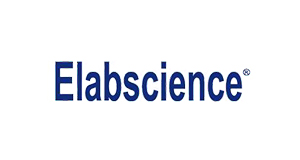Recombinant Rat CD5 / Cluster of Differentiation 5 protein (His tag)
Recombinant Rat CD5 / Cluster of Differentiation 5 protein (His tag)
SKU
ELSPDER100090-100
Packaging Unit
100 µg
Manufacturer
Elabscience Biotechnology
Availability:
loading...
Price is loading...
Abbreviation: CD5
Target Synonym: T-cell surface glycoprotein CD5;Cd5;
Target Species: Rat
Expression Host: E.coli
Fusion Tag: N-His
UNIProt ID: P51882
Background: The cluster of differentiation (CD) system is commonly used as cell markers in immunophynotyping. Different kinds of cells in the immune system can be identified through the surface CD molecules which associating with the immune function of the cell. There are more than 320 CD unique clusters and subclusters have been identified. Some of the CD molecules serve as receptors or ligands important to the cell through initiating a signal cascade which then alter the behavior of the cell. Some CD proteins do not take part in cell signal process but have other functions such as cell adhesion. CD5 is a member of the CD system. CD5 was found to be widely distributed in T-cells and B1 cells which is a subset of IgM-secreting B cells. CD5 also was found expressed in small lymphocytic lymphoma, hairy cell leukaemia and mantle cell lymphoma cells. CD5 serves to weaken the activating stimulus from the BCR so that the B1 cells can only reflect to the very strong stimuli but not the normal tissue proteins.
Sequence: Ser 25-Pro 368
Purity: > 95 % as determined by reducing SDS-PAGE.
Formulation: Lyophilized from sterile PBS, pH 7.4.
Normally 5 % - 8 % trehalose, mannitol and 0.01% Tween80 are added as protectants before lyophilization.
Please refer to the specific buffer information in the printed manual.
Endotoxin: Please contact us for more information.
Target Synonym: T-cell surface glycoprotein CD5;Cd5;
Target Species: Rat
Expression Host: E.coli
Fusion Tag: N-His
UNIProt ID: P51882
Background: The cluster of differentiation (CD) system is commonly used as cell markers in immunophynotyping. Different kinds of cells in the immune system can be identified through the surface CD molecules which associating with the immune function of the cell. There are more than 320 CD unique clusters and subclusters have been identified. Some of the CD molecules serve as receptors or ligands important to the cell through initiating a signal cascade which then alter the behavior of the cell. Some CD proteins do not take part in cell signal process but have other functions such as cell adhesion. CD5 is a member of the CD system. CD5 was found to be widely distributed in T-cells and B1 cells which is a subset of IgM-secreting B cells. CD5 also was found expressed in small lymphocytic lymphoma, hairy cell leukaemia and mantle cell lymphoma cells. CD5 serves to weaken the activating stimulus from the BCR so that the B1 cells can only reflect to the very strong stimuli but not the normal tissue proteins.
Sequence: Ser 25-Pro 368
Purity: > 95 % as determined by reducing SDS-PAGE.
Formulation: Lyophilized from sterile PBS, pH 7.4.
Normally 5 % - 8 % trehalose, mannitol and 0.01% Tween80 are added as protectants before lyophilization.
Please refer to the specific buffer information in the printed manual.
Endotoxin: Please contact us for more information.

 Deutsch
Deutsch










